The Transformative Journey of Mindfulness


Mindfulness is a transformative practice that involves being fully present, aware of our current environment, actions, and feelings without being swayed or overwhelmed by them. It’s not just a technique, but a way of life that helps us to appreciate the moment and to live our lives in a more fulfilling way.
This article focuses on various mindfulness techniques, exercises, and the unique benefits of incorporating mindfulness into daily life and activities, including the ancient game of Go.
Mindfulness significantly impacts both mental and physical health by enhancing well-being, reducing stress, and improving physical health conditions like heart diseases and chronic pain. Techniques like focused breathing, body scan meditation, and sitting meditation offer structured ways to practice mindfulness. These exercises can be easily incorporated into daily life, contributing to stress relief, emotional regulation, and overall happiness.
Understanding Mindfulness
By being mindful, we can reduce stress, manage anxiety, and enhance our attention and cognitive function, making it a vital skill in modern life.
The Benefits of Mindfulness:
- Emotional Well-being: Mindfulness has been shown to increase positive emotions and reduce negative ones, often even matching the efficacy of antidepressants in treating depression.
- Brain Health: Practicing mindfulness is linked to an increased density of gray matter in brain regions associated with learning, memory, emotional regulation, and empathy.
- Improved Focus: Mindfulness helps one tune out distractions and focus better, improving memory and attention skills as well asdecision-making capabilities.
- Enhanced Relationships: Mindful individuals are more satisfied in their relationships and foster a sense of closeness and acceptance with their partners.
- Resilience and compassion: Mindfulness training can help us be more resilient in the face ofnegative feedback and stressful situations. It also helps us to develop compassion and altruismFights Bias and Enhances Creativity: Mindfulness can help reduce implicit biases and foster creativity. This is important in both personal and professional lives. Being mindful can help us to see things more clearly and lead to more creative solutions.
- Practicing Mindfulness:
Mindfulness can be developed through various practices, such as seated, walking, standing, or moving meditation. It does not require changing our identity or even sitting in a specific pose ; it is about engaging with our present moment with warmth and kindness towards ourselves and others. By integrating mindfulness into our daily lives, from mindful breathing to body scans, we not only benefit our personal well-being but also impact our interactions with others. This makes mindfulness a powerful tool for improving the quality of our lives..
In summary, mindfulness is more than just a practice; it is a way of living that enriches every aspect of our lives. Mindfulness has numerous benefits, including improving personal health, relationships,and professional skills.. By integrating mindfulness into our daily routines, we can develop a stronger sense of self, enhance our interactions with others, and navigate life’s challenges more effectively and with greater clarity.
Mindfulness Techniques for Everyday Life
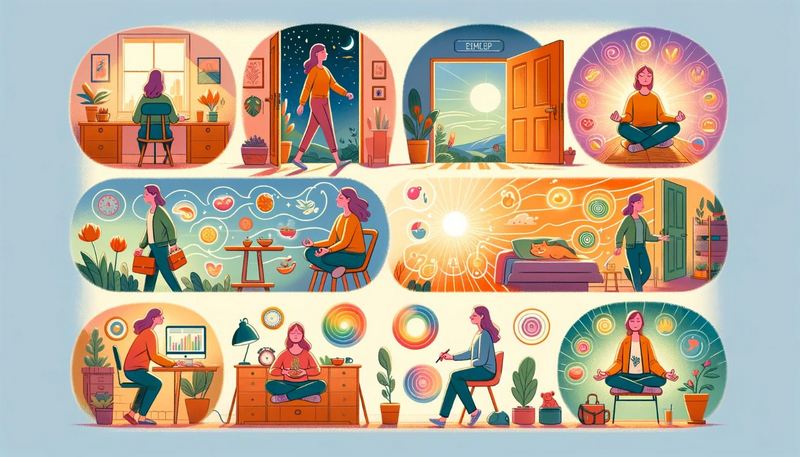
Incorporating mindfulness into daily activities can significantly improve your quality of life by promoting a sense of present moment awareness and presence. These simple, yet profound, practices will help you integrate mindfulness into your daily routine. They are inspired by insights from various sources including Mindful.org, Mayo Clinic, and others.
- Focused Breathing: Start your day with awareness by taking a few deep, conscious breaths before you get out of bed. During the day, try to remind yourself to take ten mindful breaths at various times to center your attention and focus.
- Mindful Eating: Before eating, pause to take a deep breath and tune into your body’s signals of hunger. Eat slowly and savor each bite, choosing foods that truly satisfies you.
- The Mindful Pause: Recognize moments of automatic behavior during your day and use simple triggers, like walking through a doorway or hearing your phone ring, to remind yourself to return to the present moment awareness. This practice can help strengthen your brain’s capacity to control automatic responses.
- Mindful Movement: Whether you are doing yoga, walking, or any other form of exercise, engage fully with the physical sensations of movement. Set an goal for your activity, synchronize your breath with your movements, and take notice of the environment around you.
- Mindful Workday: Bring attention to your communication patterns and physical sensations while sitting at your desk. Try to focus on your environment during lunch break, it is also a great time to practice mindful eating
- Mindfulness in Transition: Create routines for transitioning between parts of your day. When you return home, welcome your family, housemates, pets, and even household objects as a sign of the transition from external stresses to the sanctuary of your private space.
- Unwinding Before Sleep: End your day by focusing on your breathing and body sensations for a few minutes before sleep. This practice helps activate the parasympathetic nervous system and promotes rest and relaxation.
By integrating these practices into our daily lives, mindfulness goes beyond being just an exercise—it becomes a way of living that brings awareness and caring into everything we do. This helps reduce stress and enhance our wellbeing.
Structured Mindfulness Exercises for Everyday Life
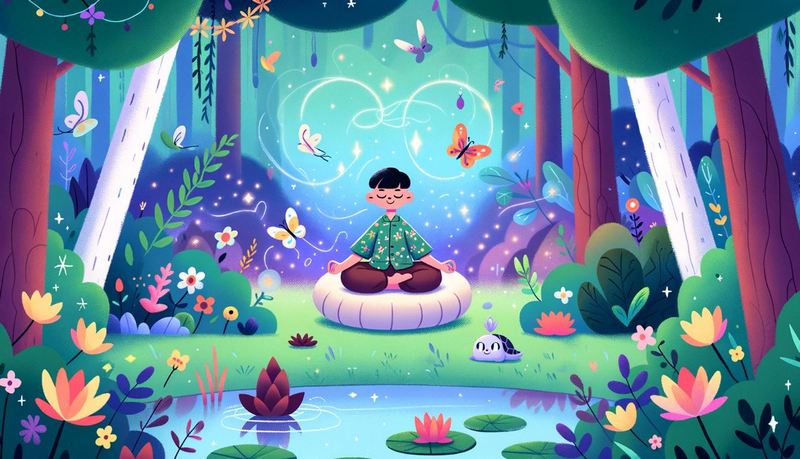
Body Scan Meditation: This technique involves lying on your back with your legs extended and your arms resting on your sides, with your palm facing upwards. You then slowly focus your attention on each part of the body, starting with your toes and moving upwards to your head. Alternatively, you could start by focussing on your head and then move downwards. The goal is to observe any sensations, emotions, or thoughts associated with each part of your body.
Sitting Meditation: Choose a comfortable seat with a straight back and your feet flat on the floor. Put your hands in your lap and focus on your breathing as it moves in and out through your nostrils. If your mind wanders, acknowledge the thoughts or feelings and gently bring your attention back to your breathing again.
Walking Meditation: Choose a quiet area, 10 to 20 feet in length, for this practice. Walk slowly, focusing on the experience of walking, paying attention to the sensations of standing and the subtle movements that keep your balance. When you reach the end of your path, turn around and continue walking, maintaining awareness of your sensations.
When and How Often to Practice:
- Simple mindfulness exercises can be practiced anytime and anywhere, especially outside where engaging your senses can be particularly beneficial.
- Structured exercises, such as body scanning or sitting meditation, require a quiet space free from distractions. The early morning is ideal for this,before starting your daily activities.
- Consistency is key. It is recommended that you practice mindfulness every day for about six months to achieve the best results. As time goes by, mindfulness can become a natural part of your daily routine.
Each of these practices has a unique way of enhancing mindfulness and can easily be integrated into your daily life. Whether you only have a few minutes free or dedicate an entire period of time to meditation, incorporating these exercises will lead to improved physical and mental health, increased focus, and reduced stress. To learn more about these techniques, explore resources offered by reputable health organizations like the Mayo Clinic. These organizations can provide further guidance and modifications to suit your specific needs.
Creative Mindfulness Practices
- Observer Meditation: Sit quietly and observe your thoughts and emotions without engaging in them, promoting a non-judgemental awareness.
- Five Senses Exercise: Focus sequentially on each of the five senses (hearing, touch, sight, taste, and smell), deeply connecting with your immediate environment.
- Gratitude Reflection: Every day, write down three things you are grateful for. This will help to enhance positivity and contentment in your life.
- Mindful Walking: Walk slowly and deliberately, paying close attention to your own movements and the environment around you.
- Artistic Expression: Engage in drawing, painting, or crafting with full concentration, noticing the colors, textures, and sensations.
These practices encourage a mindful presence, improving well-being by fostering a deeper connection with ourselves and the surrounding world.
Mindfulness in Motion: The Game of Go as a Meditative Practice

The ancient game of Go, also known as Baduk in Korea and Weiqi in China, transcends mere entertainment and embodies a profound meditative practice. This board game is renowned for its complexity and strategic depth, uniquely promotes mindfulness through the requirement for present-moment awareness, deep concentration, and a serene state of mind. Here’s how Go can become a sanctuary for mindfulness:
- Present-Moment Focus: Engaging in a game of Go requires undivided attention to every move and counter-move, anchoring the players in the present moment.
- Strategic Thinking: It enhances cognitive abilities by requiring players to anticipate multiple possible outcomes based on the current state of the board.
- Emotional Regulation: Go teaches patience and acceptance, two essential qualities for mindfulness. It helps players manage their stress and emotional responses in a healthy way.
- Calmness and Clarity: The game encourages a calm and reflective approach to problem-solving. It fosters a meditative state of mind that can help players improve their focus and concentration.
- Playing Go is not just about winning or losing; it’s a journey into the art of mindfulness, offering a peaceful escape from life’s hustle and enhancing mental well-being.
To embark on this journey of mindfulness and strategic depth, GoMagic provides a comprehensive platform where both beginners and experienced players can explore the intricate world of Go. Whether you’re looking to understand the fundamental rules, challenge your skills with diverse problems, or deepen your knowledge through structured courses, GoMagic is your gateway.
- Learn the Rules of Go: Discover the foundational principles that guide the game of Go, making your introduction into this ancient game as seamless as possible. For more details, visit How to Play Go – Rules.
- Solve Problems and Elevate Your Play: Sharpen your Go skills by solving problems that are tailored to enhance your strategic thinking and spatial awareness. Increase your level of play here: Go Problems.
- Interactive Video Courses: GoMagic’s video courses with interactive elements designed for players of all skill levels, providing a rich learning experience that is both engaging and educational. Explore courses here: Course Categories.
Embrace the meditative practice of Go and discover a path to mindfulness, strategic depth, and a peaceful state of mind with GoMagic.
Implementing Mindfulness into Daily Routines
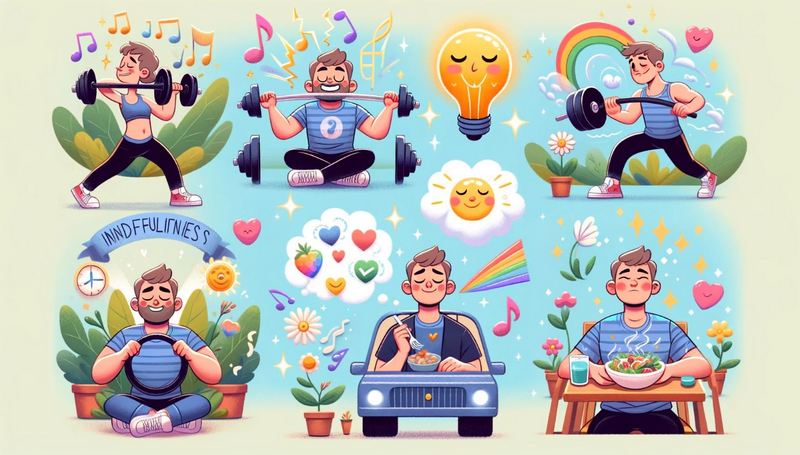
Implementing mindfulness into daily routines enriches life with peace and awareness.It transforms mundane tasks into moments of deep presence and connection. Here are some practical ways to weave mindfulness into our daily activities:
- During Workouts: Focus on your breathing and the sensations in your muscles. Each step or lift becomes an act of mindfulness, leading to improved physical and mental well-being.
- While Driving: Pay attention to your feelings while driving, such as the feel of the steering wheel and the sounds of the road, as well as your breathing. This practice can help reduce stress and increase driving enjoyment.
- In Conversations: Listen actively and pay full attention to what the speaker is saying. This will help create deeper connections and understanding.
- Eating Meals: Eat slowly and enjoy each bite. Notice the textures and flavors of the food. This can improve your digestion and overall quality of your meals.
- During Breaks: Take short, thoughtful walks. Observe the sensations your feet make as they touch the ground and feel the air on your skin.
By incorporating mindfulness into everyday activities, mundane tasks become opportunities for self-reflection, improving overall well-being and mental clarity throughout the day.
Conclusion
This structure provides a comprehensive overview of mindfulness techniques, for both beginners and experienced practitioners alike. It creatively ties in the game of Go as an innovative approach to mindfulness practice.
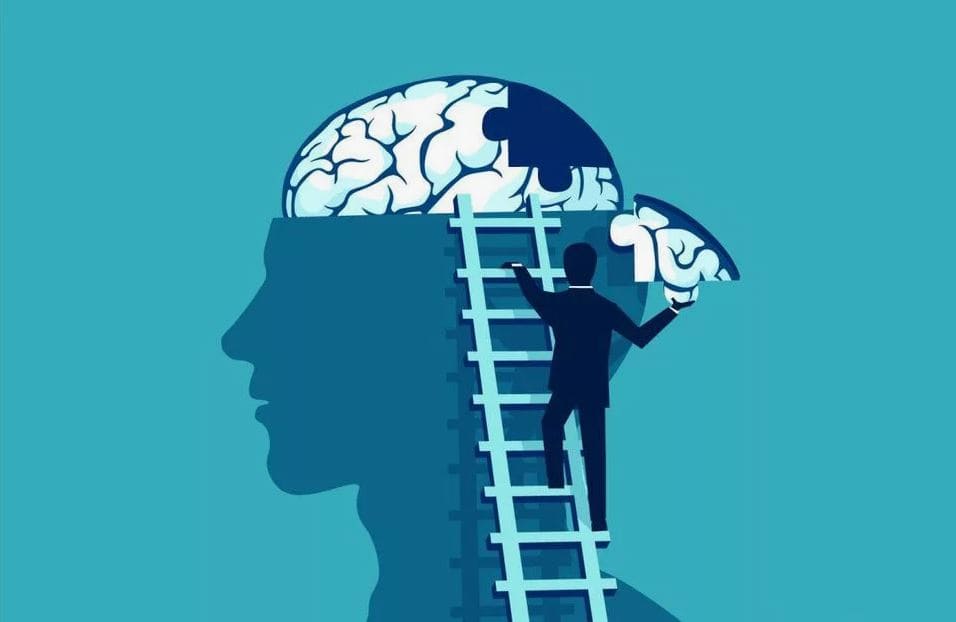


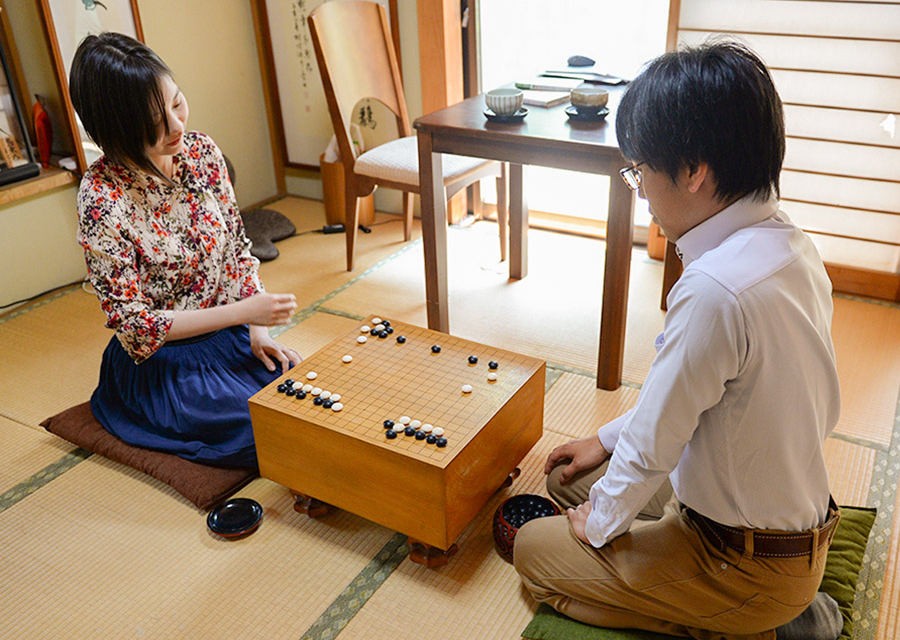

Hey, an interesting approach to Go and mindfulness!